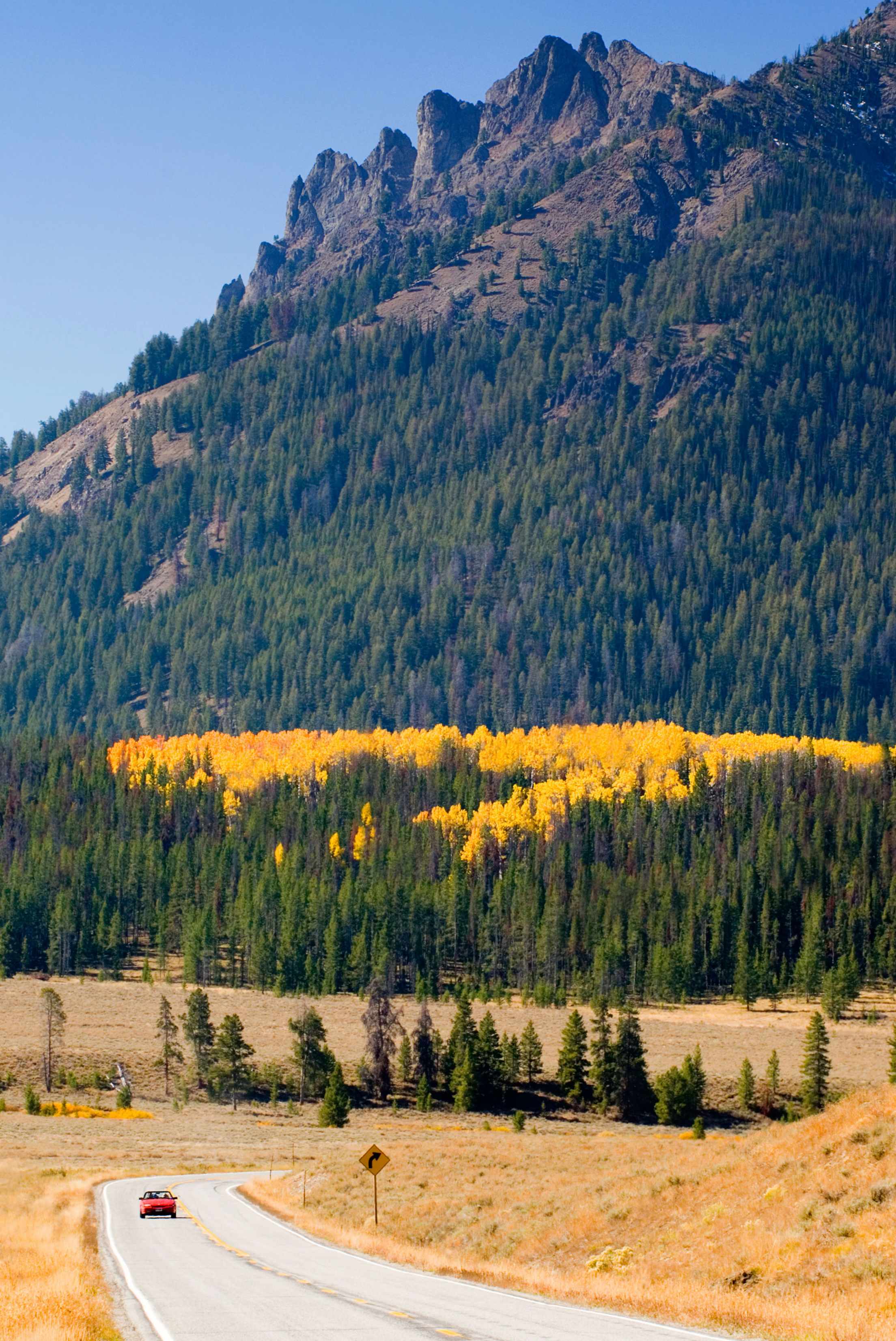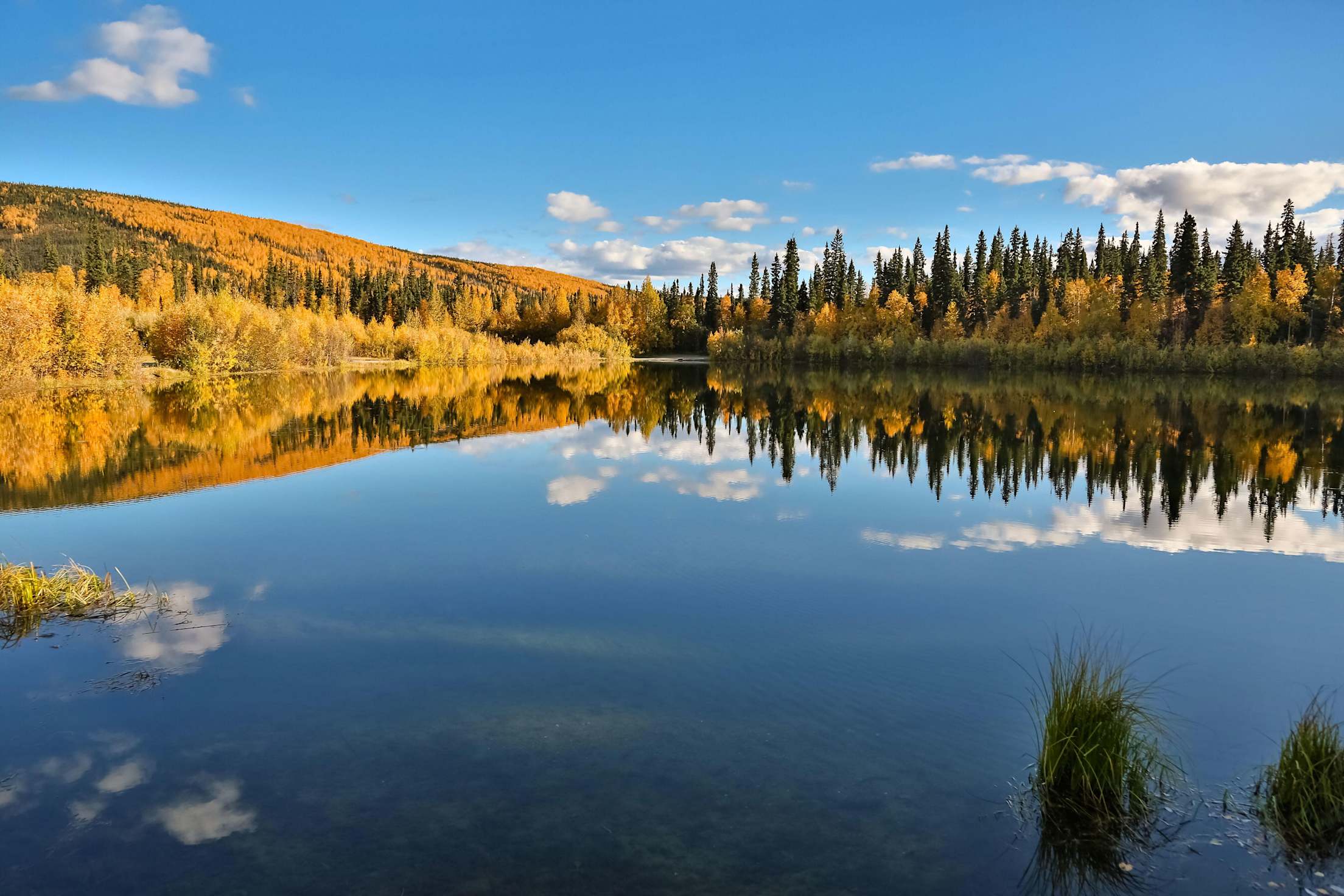
How to Find Off-the-Radar Fall Foliage in the West
Forgo the crowds and find your own quiet pocket of autumnal magic.

Move over, Maine! It’s fall in the West: The sunlight’s sifting softly through the forest, and scores of valleys and hillsides are bursting with color as aspens, maples, and oaks shed their summer green for a more flamboyant fashion. And while popular places such as Glacier, Grand Teton, and Yellowstone National Parks are always winners when it comes to frolicking amid autumn’s awesomeness, there are plenty of colorful pockets to explore that will have a fraction of the crowds.
But how do you find them? Leaf-peepers have it easier than ever these days thanks to a slew of apps, websites, and real-time reports by fellow travelers that can help pinpoint when and where to go. As always, timing is key—temperatures, sunlight, and the amount of water trees can access all influence when the leaves turn and how vibrant they can be. (Generally speaking, drier, higher, and northern areas tend to peak earlier in the season.) Rainy or overcast days will produce a more indirect, shadow-free light that really makes the colors zing. “It’s one of the best displays nature puts on,” says Dr. Howard Neufeld, a plant ecophysiologist in the Department of Biology at North Carolina’s Appalachian State University, who estimates millions of travelers looking for colorful leaves pump at least $30 billion into local economies. “It’s a great time to get outside, it’s an inexpensive thing to do, and it really makes you appreciate what’s around you.”

How to Find the Best Fall Color
Your first step should be researching when to go, as leaves can start to change anytime from mid-August in Alaska to as late as Christmas in parts of Arizona. Numerous websites offer forecasts and updates on where the leaves are changing, when they start, and how long the show might last. American Forests’ site offers a countywide breakdown of the nation with a slider that lets you pick dates to show the color progression in any given area. The Old Farmer’s Almanac is another great resource that predicts places such as northern Montana, the Bay Area, and Salt Lake County, Utah, may peak as early as September 25. By November 13, pretty much everything in the West will likely be past its prime.
Remember, no forecast will ever be 100 percent accurate, especially as the effects of climate change upend reliance on historical data. The U.S. Drought Map reveals that much of the West is indeed quite dry, a factor that can bring peak color change earlier in the season and lasting less time—or in times of moderate drought, do the opposite: delay the colors.
As for figuring out where to go, the National Parks Service maintains a list of deciduous forests across its properties as well as a list of social media channels you can go to for updates. But to really find that secret stand of maples, oaks, or aspens, here’s a great hack: download the OnX Hunt app, which offers a free trial. The GPS mapping app, meant for hunters, includes a robust layer that pinpoints deciduous forests in any state, along with private land boundaries to keep you from trespassing. You can even filter the results by type of tree. Looking for a secret cache of aspen and birch trees near Tahoe City? OnX reveals there’s a stand in the southeast corner of Burton Creek State Park and another off the Antone Meadow Loop Trail. Make an adventure of it and go find them.

Off-the-radar Spots for Leaf-peeping
Just want to see some pretty colors? We can help. Late summer and early fall make a fantastic time to head to Alaska, when the summer cruise traffic has dwindled and snow dusts the tops of the mighty peaks. To catch the country’s first fall foliage show, plan a trip to Fairbanks, where the colors begin to change around mid-August. Chena River State Recreation Area, about a 30-minute drive east is a great bet, as is booking a stay at the nearby Chena Hot Springs Resort. To go really off-the-radar, head north to the Brooks Range and Coldfoot, a community above the Arctic Circle reachable by road, to see the tundra turn purple, red, and orange.
Arizona’s White Mountain Scenic Road winds through the Fort Apache Indian Reservation for about 123 miles, mostly along Highway 260. Start high among the maples in Pinetop-Lakeside and continue on to forests of red and gold. Want to get out of the car? Take a scenic chairlift ride at Sunrise Ski Park for more airy views.
The Ruby Mountains in northeast Nevada are a sneaker hit with 11,000-foot peaks and stunning canyons. Head to Lamoille Canyon, about a 25-minute drive from Elko, in mid-October to catch the cottonwoods and aspens lighting up.
Everyone knows (or has probably seen pictures of) golden aspens lining the incredibly scenic Oxbow Bend along the Wyoming Centennial Scenic Byway near Grand Teton National Park. For more solitude, head to the Brush Creek Visitor Center along the Snowy Range Scenic Byway to wander among the aspens, or drive 49 miles west off Highway 70 near Encampment to find Aspen Alley, a fairy-tale sight of 50-foot-high aspens arcing over the road.